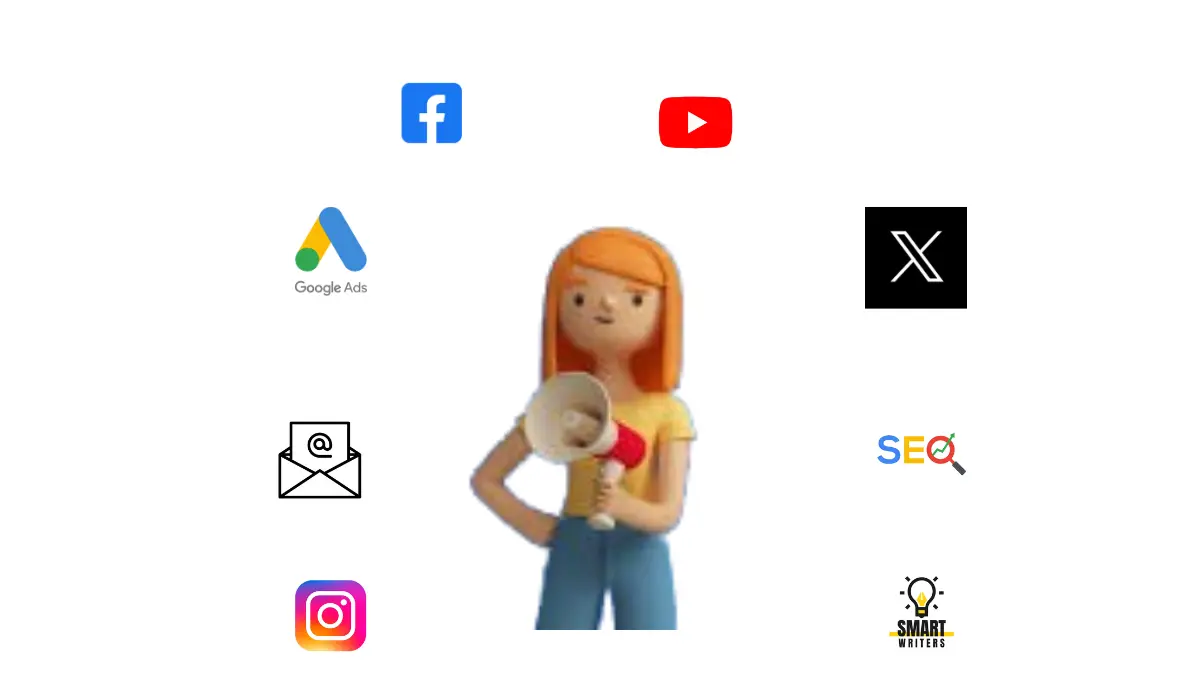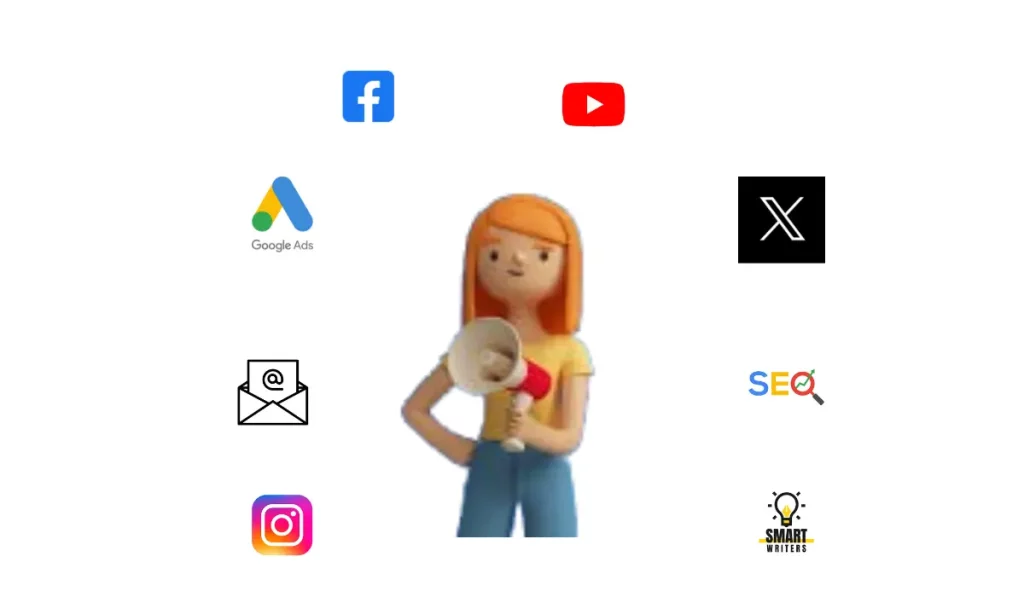Businesses can maximize their reach through cross-platform marketing strategy. It helps to engage with audiences more effectively, and drive better results across multiple channels.
Cross-platform marketing strategy involves creating and implementing marketing campaigns that span multiple platforms, such as social media, email, websites, mobile apps, and offline channels. The goal of cross-platform marketing is to reach target audiences wherever they are, providing a consistent brand experience across different channels and devices.
Key Elements of a Cross-Platform Marketing Strategy:
A successful cross-platform marketing strategy requires careful planning and execution across various elements. Here are key components to consider:
Audience Identification and Segmentation:
Understand your target audience’s demographics, behaviors, and preferences across different platforms. Segment your audience based on relevant criteria to deliver personalized messaging and experiences.
Consistent Branding:
Maintain a consistent brand identity and messaging across all platforms to reinforce brand recognition and trust. Ensure that visual elements, tone of voice, and messaging align seamlessly across channels.
Content Strategy:
Develop a cohesive content strategy that considers the unique characteristics and audience preferences of each platform. Create content that resonates with your target audience while aligning with your overall brand objectives.
Multi-Channel Integration:
Integrate your marketing efforts across various channels, including social media, email, website, mobile apps, and offline channels. Ensure a seamless experience for users as they transition between different touchpoints.
Omni-Channel Experience:
Provide a unified and consistent experience for customers across all channels and devices. Enable customers to interact with your brand seamlessly, whether they are browsing your website, engaging with your social media content, or visiting a physical store.
Data Integration and Analysis:
Collect and integrate data from different sources to gain insights into customer behavior and preferences. Use data analytics to track performance, measure ROI, and optimize marketing campaigns across platforms.
Personalization and Targeting:
Leverage data-driven insights to deliver personalized content and offers to specific audience segments. Tailor your messaging and marketing campaigns to address the unique needs and interests of different customer segments.
Cross-Promotion and Engagement:
Encourage cross-promotion and engagement across platforms to increase brand visibility and audience engagement. Share content, promotions, and campaigns across channels to reach a wider audience and drive traffic to different platforms.
Testing and Optimization:
Continuously test and optimize your cross-platform marketing efforts to improve performance and ROI. Experiment with different strategies, messaging, and creative elements to identify what resonates best with your audience.
Measurement and Reporting:
Establish key performance indicators (KPIs) to track the success of your cross-platform marketing initiatives. Monitor metrics such as reach, engagement, conversion rates, and customer acquisition costs, and use this data to inform future decision-making.
How does Cross-Platform Marketing Work?
Cross-platform marketing works by leveraging multiple channels and platforms to reach target audiences, provide consistent brand messaging, and drive desired actions or conversions. Here’s how it typically works:
Audience Identification:
The process begins with identifying your target audience and understanding their behaviors, preferences, and demographics across various platforms. This information helps tailor your marketing efforts to effectively reach and engage your desired audience segments.
Platform Selection:
Based on audience insights, select the most relevant platforms where your target audience is active. These platforms may include social media networks (e.g., Facebook, Instagram, Twitter), search engines (e.g., Google), email marketing, websites, mobile apps, and offline channels (e.g., events, print media).
Content Creation:
Develop compelling and relevant content that resonates with your target audience while aligning with your brand objectives. Content may include blog posts, articles, videos, images, infographics, social media posts, email newsletters, and more.
Content Optimization:
Adapt your content to suit the unique characteristics and requirements of each platform. For example, optimize images and videos for different aspect ratios on various social media platforms, or customize email newsletters for different segments of your subscriber list.
Integration Across Channels:
Integrate your marketing efforts across multiple channels to create a cohesive and seamless experience for users. For instance, promote your social media profiles on your website and email newsletters, or include links to your website in your social media posts.
Cross-Promotion:
Encourage cross-promotion and engagement across platforms to maximize reach and visibility. Share content, promotions, and campaigns across different channels to attract users and drive traffic to your various platforms.
Data Collection and Analysis:
Collect data from various sources, including website analytics, social media insights, email marketing metrics, and more. Analyze this data to gain insights into customer behavior, preferences, and engagement across different platforms.
Personalization and Targeting:
Utilize data-driven insights to personalize your marketing efforts and target specific audience segments with relevant content and offers. Tailor your messaging and campaigns to address the unique needs and interests of different customer segments.
Measurement and Optimization:
Set key performance indicators (KPIs) to track the success of your cross-platform marketing initiatives. Monitor metrics such as reach, engagement, conversion rates, and ROI, and use this data to optimize your campaigns for better results.
Iterative Improvement:
Continuously test and refine your cross-platform marketing strategies based on performance data and insights. Experiment with different approaches, messaging, and creative elements to identify what resonates best with your audience and drives the desired outcomes.
Also Read
Tips to Implement Cross-Platform Marketing Strategy Successfully
Implementing a cross-platform marketing strategy successfully requires careful planning, coordination, and execution. Here are some tips to help you effectively implement cross-platform marketing:
Define Clear Objectives:
Start by clearly defining your marketing objectives and goals. Determine what you want to achieve with your cross-platform marketing efforts, whether it’s increasing brand awareness, driving website traffic, generating leads, or boosting sales.
Know Your Audience:
Conduct thorough research to understand your target audience’s demographics, behaviors, preferences, and the platforms they frequent. Tailor your messaging and content to resonate with your audience across different channels.
Create Consistent Branding:
Maintain a consistent brand identity and messaging across all platforms to reinforce brand recognition and trust. Use consistent visual elements, tone of voice, and messaging to ensure a cohesive brand experience.
Develop a Content Strategy:
Create a cohesive content strategy that aligns with your marketing objectives and audience preferences. Tailor your content to suit the unique characteristics of each platform while maintaining consistency in branding and messaging.
Optimize for Each Platform:
Customize your content and marketing campaigns to suit the specific requirements and features of each platform. Optimize images, videos, and text for different platforms and consider the best times to post or send messages for maximum engagement.
Integrate Across Channels:
Integrate your marketing efforts across multiple channels to create a seamless experience for your audience. Use consistent messaging and cross-promotion to encourage users to engage with your brand across different platforms.
Utilize Data and Analytics:
Collect and analyze data from various sources to gain insights into customer behavior, preferences, and campaign performance across different platforms. Use this data to inform your marketing strategies and optimize your campaigns for better results.
Personalize Your Marketing:
Leverage data-driven insights to personalize your marketing efforts and target specific audience segments with relevant content and offers. Tailor your messaging and campaigns to address the unique needs and interests of different customer segments.
Monitor and Measure Performance:
Set key performance indicators (KPIs) to track the success of your cross-platform marketing initiatives. Monitor metrics such as reach, engagement, conversion rates, and ROI, and use this data to optimize your campaigns for better results.
Stay Agile and Adapt:
Be flexible and willing to adapt your strategies based on changing trends, audience feedback, and performance data. Continuously test and iterate on your cross-platform marketing efforts to improve effectiveness and achieve your goals.
Also Read
End Words
By following these tips and implementing a well-planned cross-platform marketing strategy, you can effectively reach and engage your target audience across multiple channels, driving business growth and success.







